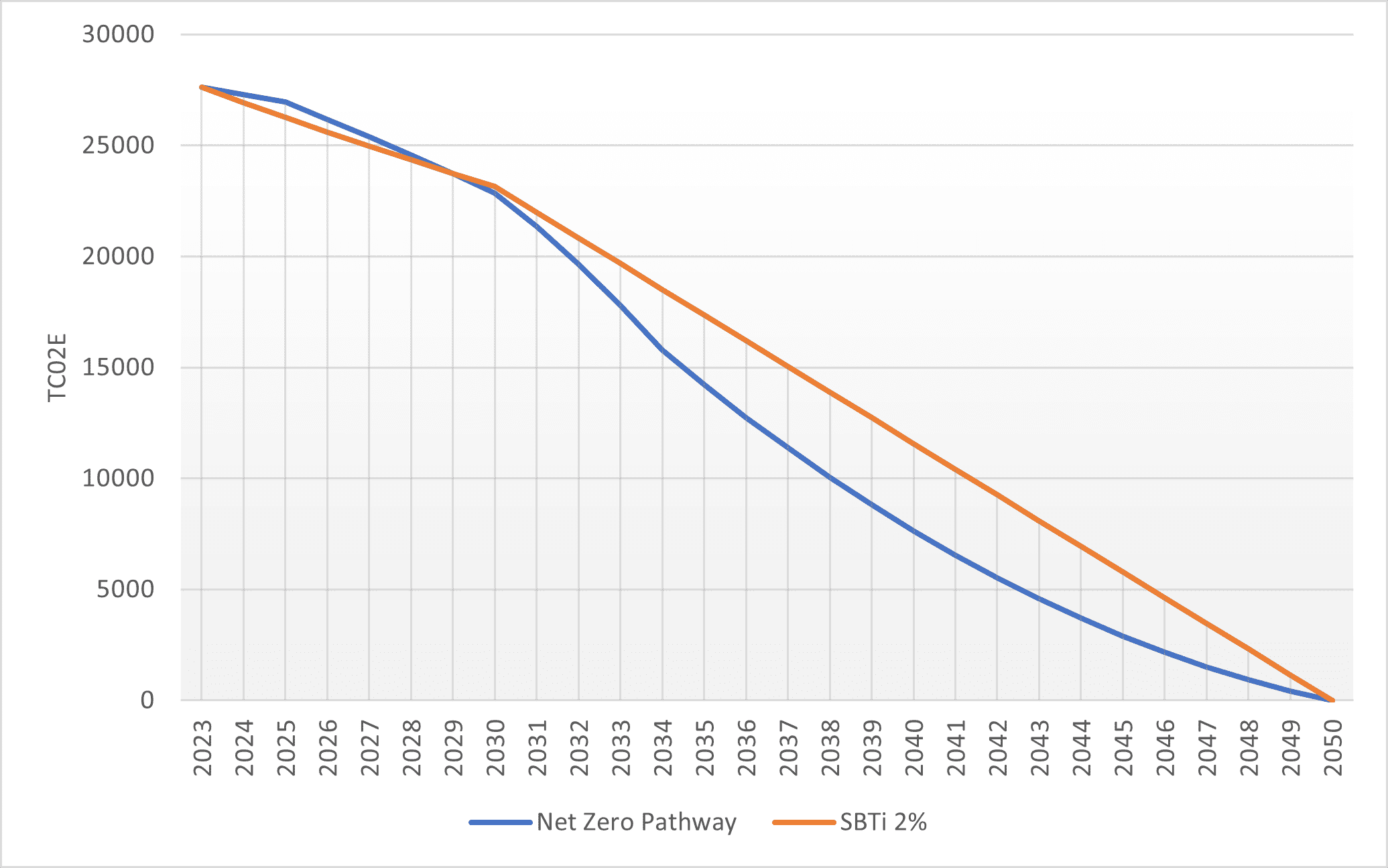‘Science-based targets (SBTs) specify how much and how quickly a company would need to reduce its’ greenhouse gas (GHG) emissions in order to align with the goals of the Paris Agreement.’ [1]. This is an initiative set by the partnership between: World Resource Institute, Worldwide Fund for Nature, United Nations Global Compact and CDP Worldwide.
In response to client requests, we have conducted an analysis to compare the current Net Zero pathway for housing with the SBTi guidelines. This analysis will serve as a useful reference when setting or reviewing targets, as legislation tends to overlap.
To facilitate this analysis, we’ve made certain assumptions to establish a common basis for evaluation.
Assumptions:
Scope:
- SBTi target = 2.5% reduction of scope 3 emissions each year for a “near term target” – assume for SHIFT this equates to 2030 because homes must be all EPC C by 2030
- After that – decrease by a steady amount such that by 2050 there is 0 tonnes
- Net zero pathway uses current legislation (details below) to achieve the 2050 target.
Calculations:
- Starting no. of homes 10,000
- Starting Average SAP – 71
- Growth in New Build – 2%
- Disposals – 0.5%
- Gas carbon factor = 0.183
- No electrically heated homes at start
- All new homes after 2025 are electric
- Electricity carbon factor steadily decreases to zero for a Net Zero grid by 2035 [2]
- Assume work to convert existing homes to electrical heating after 2030
- 100% of disposals are gas heated homes
- SAP of new builds increases to 95 after 2025
- All homes EPC C or better by 2030

From the analysis, we can see that both of pathways lead to Net Zero, and although there’s somewhat of a deviation between the two, they both accomplish the same role. Therefore, it would be fair to say that a company, that is already complying with current legislation for housing and building, will still meet/achieve the objectives set out by the SBTs.
However, if solely basing targets with the SBTs, there will be a ‘spike’ in carbon output. This is due to an organisation not being able to instantly integrate reductions, especially in a real-world scenario with reliance on contractors and suppliers. The slope downwards is a lot steeper with Net Zero due to the accumulative effect of implementing changes early. The earlier the changes and adjustments are made; the quicker momentum can be built.
Although the SBTs may be a good industry wide goalpost, the specific legislation and ‘best practice’ are still the go-to. If you have concerns about reaching Net Zero, contact us at SHIFT, so we can make sure you’re heading in the right direction.
[1] https://sciencebasedtargets.org/resources/files/DRAFT_SBTI_Buildings_Guidance.pdf
[2] https://www.gov.uk/government/news/plans-unveiled-to-decarbonise-uk-power-system-by-2035
